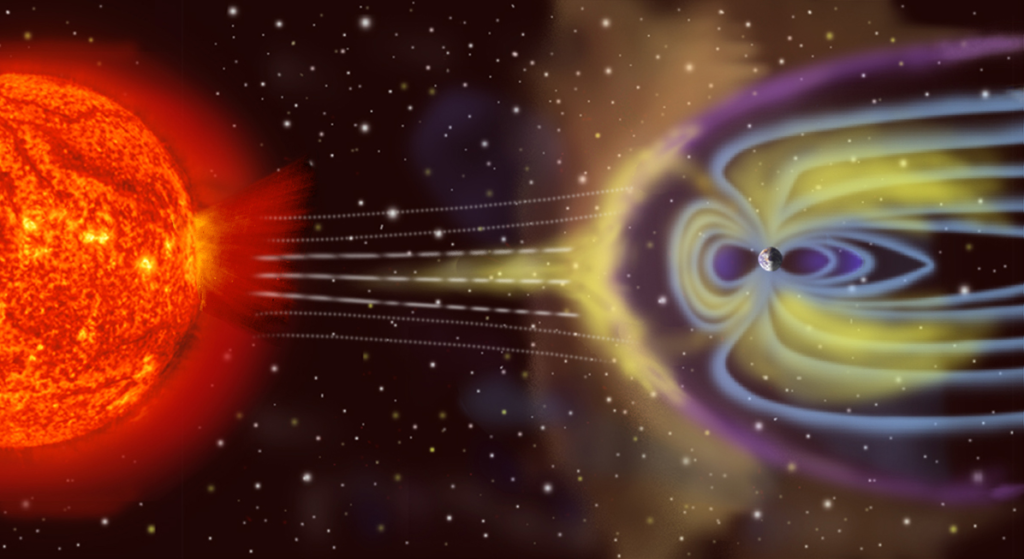
The Sun and Earth share an incredibly special relationship. As the Earth orbits around the Sun, the energy and light we receive from it sustain life, making our planet unique in the vast expanse of the universe. In this section, we’ll explore 10 fun and fascinating facts that help us understand how the Sun impacts life on Earth. These facts not only introduce you to basic astronomy concepts but also showcase the incredible science behind this relationship.

1. The Sun is Our Biggest Star
The Sun is a massive ball of hot gas at the center of our solar system. It makes up more than 99% of the mass of the entire solar system! Without the Sun, Earth wouldn’t be able to support life as we know it. The Sun is so big that you could fit about 1.3 million Earths inside it!
2. The Sun’s Energy Keeps Us Warm
The energy from the Sun travels through space as light and heat, warming the Earth. This energy is what makes life on Earth possible, helping plants grow, animals thrive, and humans stay comfortable. The Sun’s energy also drives the Earth’s weather and climate systems.
3. The Earth Orbits the Sun in an Elliptical Path
Earth doesn’t travel around the Sun in a perfect circle. Instead, it follows an elliptical (oval) path. This is why we have different seasons—when Earth is closer to the Sun, it’s summer in the Northern Hemisphere, and when it’s farther away, it’s winter.
4. Solar Wind Affects Earth’s Magnetic Field
The Sun sends out a continuous stream of charged particles, known as the solar wind. This wind interacts with Earth’s magnetic field, causing phenomena like the Northern and Southern Lights (auroras), which are stunning displays of light in the sky.
5. The Sun is About 4.6 Billion Years Old
Scientists believe the Sun was born about 4.6 billion years ago from a giant cloud of gas and dust. Over time, it has become the powerful star that supports life on Earth. The Sun will continue burning for another 5 billion years before eventually expanding into a red giant and later shrinking into a white dwarf.
6. The Sun’s Light Takes 8 Minutes to Reach Us
The light from the Sun travels to Earth at the speed of light, which is 299,792 kilometers per second (about 186,282 miles per second). Even though light travels that fast, it still takes approximately 8 minutes and 20 seconds to reach Earth!
7. The Sun’s Energy Powers the Water Cycle
The Sun plays a crucial role in the water cycle, which moves water around our planet. Heat from the Sun causes water to evaporate into the atmosphere, form clouds, and eventually fall as rain, snow, or other forms of precipitation. This process is essential for providing fresh water to plants, animals, and humans.
8. Sunspots Are Cooler Areas on the Sun’s Surface
Sunspots are dark patches on the Sun’s surface that are cooler than the surrounding areas. These spots can be as large as Earth itself! Sunspots happen due to the Sun’s magnetic activity, and they sometimes cause solar flares, which can impact communication systems on Earth.
9. The Sun Has an 11-Year Cycle
The Sun goes through an 11-year cycle, during which it alternates between periods of high and low solar activity. During times of high activity, we see more sunspots, solar flares, and coronal mass ejections (CMEs) that can affect technology on Earth, including GPS systems and satellites.
10. The Sun’s Energy Is Produced in Its Core
The Sun’s energy comes from nuclear fusion, which occurs deep within its core. In the core, hydrogen atoms combine to form helium, releasing a tremendous amount of energy in the process. This energy powers the Sun and sends light and heat out into the solar system.

Conclusion
Understanding the Sun’s connection to Earth reveals how closely our planet depends on this massive ball of gas for survival. The Sun not only provides warmth and light but also plays a role in the weather, water cycle, and even the Earth’s magnetic field. These facts are just the beginning of the incredible story that the Sun and Earth share, and as scientists continue to study the Sun, we learn more about how this relationship supports life on our planet.
References
- NASA, “Solar System Exploration: The Sun.” NASA, www.nasa.gov/solar-system-exploration/the-sun.
- J. Gribbin, The Sun: A Biography. Yale University Press, 2005.
- European Space Agency (ESA), “Understanding the Sun.” ESA, www.esa.int/Understanding_the_Sun.




